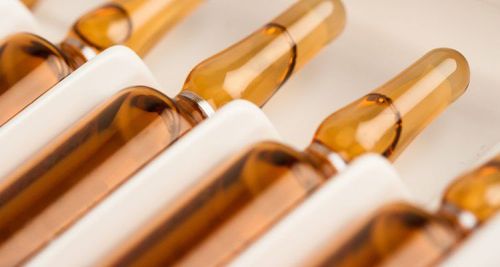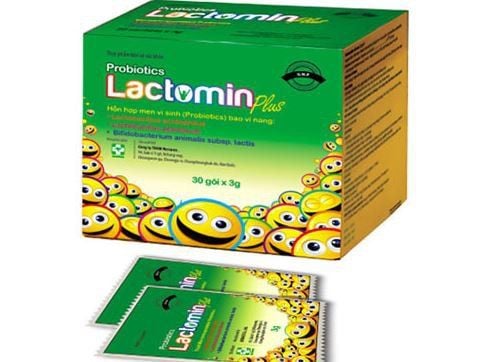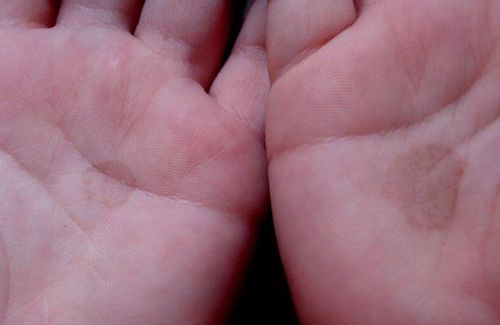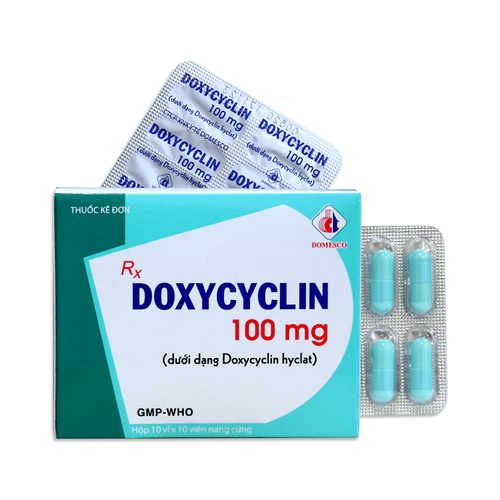This is an automatically translated article.
Posted by Master, Doctor Ma Van Tham - Head of Department of Pediatrics - Neonatology - Department of Pediatrics - Neonatology - Vinmec Phu Quoc International General Hospital
Fungal infections are one of the most common diseases in the world. Fungi exist everywhere: in the soil, water, air, on plants and animals, and even on the human body. When meeting favorable conditions such as hot and humid weather, the body's resistance decreases... fungi will grow and cause disease. Fungal diseases can affect both adults and children
Fungi (Fungi or Mycetes) are organisms whose bodies are made up of one or more cells. In the structure of fungal cells with eukaryotes, this feature is different from bacteria (Bacteria or Schizomycetes). However, fungi do not have chlorophyll, so fungi are not autotrophs because they cannot synthesize carbohydrates and proteins from simple substances. Fungi are heterotrophic organisms, living saprophytely on dead animals or plants or living as parasites on other living parts. Some fungi can live both ways. The way of life of animals is by chewing, that of plants is autotroph. Whereas fungi get the necessary nutrients from the external environment by absorption.
1. Macroscopic appearance of the fungus
Fungal cells grow and then branch to form mycelium, whereby the mycelium continues to grow and branch to form a tangled mycelium on the medium. In the mycelium there is a septum that separates the fungal cells from each other. These mycelia form colonies visible to the human eye.
According to the function and characteristics of each mycelium, people are often divided into two types of mycelium:
Substrate mycelium: growing deep into the substrate (environment), taking food from the surrounding environment for nutrition and growth. Air mycelium: growing on the surface of the medium and often protruding upwards. This mycelium consists of hyphae without reproductive organs and "air" hyphae, which carry sexual or asexual reproductive organs.

2. Structure of fungal cells
2.1. Cell cortex
Fungal cell envelope is a membrane composed of polysaccharides or mucopolysaccharides. This shell protects the fungal cells, keeping the appropriate moisture.
2.2. Cell wall
Responsible for keeping fungal cells in a certain shape. The cell wall is composed of a mixture of proteins and polysaccharides. In this mixture, the polysaccharide composition varies more or less, typical for each group of fungi and based on this, it is possible to classify the groups of fungi. The polysaccharide fraction has a complex structure and plays an important role in immunity.
2.3. Lomasom
An organelle found only in fungal cells, the lomasome is part of the protoplasmic membrane (periplasma) located between the cell wall and the plasma membrane. Lomasomes are constructed of a helical membrane system, which is involved in the cell wall of the mycelium.
2.4. Protoplasmic membrane
The protoplasmic membrane has two layers, mainly composed of a mixture of proteins and lipids, in addition to a polysaccharide part. The protoplasmic membrane separates the cell wall and the protoplasm. In fungal cells, the plasma membrane normally forms the endoplasmic reticulum, the nuclear membrane, and the membrane of the vacuole.
Protoplasm (cytoplasm): is a liquid, consisting mainly of proteins, ribonucleoproteins, lipids, glucid and water. In relatively homogeneous immature fungal cells, the older the fungal cells, the more vacuoles are available.

2.5. Mitochondrial
Composed of two membranes, the structure of these two membranes is similar to that of the plasma membrane. On the surface of the mitochondrial membrane there are small spherical particles (oxysomes) that have the function of generating energy (synthesis of ATP) and releasing energy.
2.6. Core
The outer nuclear envelope is the nuclear membrane, the inside contains the nuclear fluid containing the nucleus. Fungal cell nucleus spherical or oval, solid. Yeast has only one nucleus, filamentous fungi have many. In the nucleus of a fungal cell there is DNA like that in a bacterium, organized into a typical chromosome, and undergoes mitosis. The number of chromosomes in the cell varies depending on the fungus. In addition, in the fungal cell there are some remaining elements such as vacuoles, sferosomes, diktiosomes, ribosomes, plasmids containing substances such as proteins, lipids, glucid, enzymes, inorganic salts, electrolytes and organic substances. soluble muscle.
3. Structural and reproductive characteristics of fungi
Mushrooms have two main parts: the nutritive part and the reproductive part.
3.1. Nutritional parts of mushrooms
Pathogenic fungi are usually small in size and can only be observed under a microscope, so they are often called fungi. Based on shape, fungi are divided into two main groups:
Yeast: unicellular structure, round or oval shape, size 3 - 15μm. Filamentous fungi: composed of multicellular mycelium. The mycelium is branched and interlaced, forming clusters of mushrooms. Candida fungi, when parasitic, also form false fibers to penetrate deep into the organization. The structure of the mycelium: there are two types: large diameter septal filaments (>5 μm) and small diameter septal fibers (2 - 4 μm), in the cell tubules containing protoplasm and nucleus.
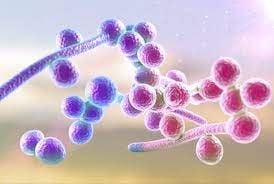
3.2. Reproductive parts of mushrooms
Fungi produce a variety of spores of different shapes and sizes. It is based on the shape, size and arrangement of spores of the fungus to determine the type of fungus.
Actinomycetes class has no reproductive parts, when it falls into a new location and meets favorable conditions, it develops into a mushroom cluster. Other classes of fungi have reproductive organs asexually or sexually, depending on the mode of reproduction.
Method of sexual reproduction: is the division of the nucleus including sexual spores such as ascospores, conjugated spores (zygospores), oocysts (oospores), and oospores. (basidiospore). Method of asexual reproduction: is the division without nuclear coordination, which is asexual spores, usually produced by mycelium, responsible for development or storage, or both. . Reserve spores usually have a dense cytoplasm and are rich in nutrients. The reserve spores include: thick membrane spores (chlamydoconidium), pollen spores (alcurioconidium), and fusiform spores. Spore development has two types:
Born from the fungal body (thalic) consisting of germ spores (blastoconidium), burning spores (athroconidium), pollen spores (aleurioconidium) – these are storage spores but sometimes do development tasks. Born from the fungal body into separate cells but still attached to the fungal body called connidium spores. Spores of this type vary in size, shape, and color, and can form blocks or chains that are bottle-shaped, broom-shaped, or daisy-shaped. Yeast reproduces by a process called budding. A small bud normally grows at the pole of the fungal cell, which enlarges and forms a daughter cell, which eventually separates from the parent cell. In some yeasts these shoots are elongated, with cells that stick together to form chains called pseudofilaments. Candida reproduces asexually, the coat spores or thick membrane spores usually growing at the apex of the pseudofilaments.
Fungal cells grow and then branch to form mycelium, from the mycelium continue to branch to form a tangled mycelium on the medium. The mycelium forms colonies (fungal colonies) that are visible to the naked eye. Each mushroom cluster usually has its own characteristics based on which one can distinguish different strains of fungi. In each cluster of fungi, there are myceliums that go deep into the culture medium to absorb nutrients, called nutritive mycelium (substrate mycelium), there are myceliums that spread on the surface to produce organs. reproduce, called the growing mycelium (airy mycelium).
Please dial HOTLINE for more information or register for an appointment HERE. Download MyVinmec app to make appointments faster and to manage your bookings easily.





